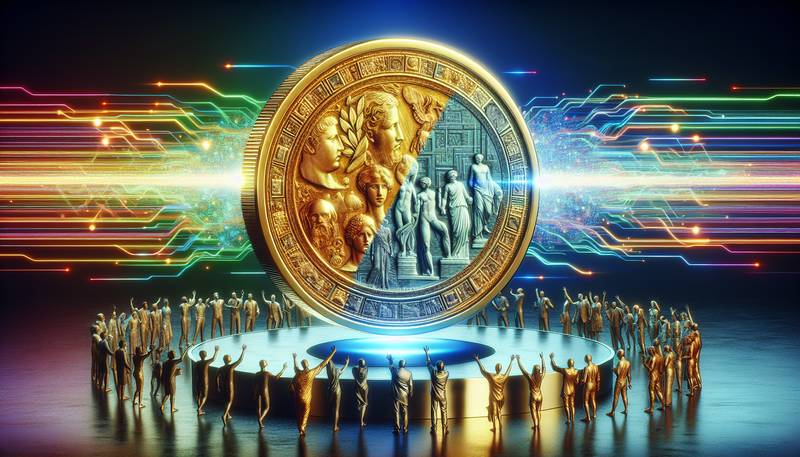NFTs Explained: The New Digital Art Revolution

Introduction
Over the past few months, the art world has been buzzing with excitement about a new trend that's taking the industry by storm - NFTs. NFTs, or non-fungible tokens, are a type of digital asset that's changing the way we think about art and ownership. But what exactly are NFTs, and why are they causing such a stir? In this article, we'll explain everything you need to know about NFTs, and why they're being hailed as the new digital art revolution.
What are NFTs?
At its core, an NFT is a unique digital asset that's stored on a blockchain. Unlike cryptocurrencies like Bitcoin, which are fungible and can be exchanged for other Bitcoin, NFTs are one-of-a-kind and cannot be replicated. This uniqueness is what makes them so valuable, as it allows artists to create and sell digital art that can't be copied or reproduced. NFTs can represent anything from digital art to music, videos, and even tweets.
How do NFTs work?
When an artist creates a digital artwork, they can turn it into an NFT by uploading it onto the blockchain. This process, known as "minting," creates a unique digital signature that cannot be altered or duplicated. Once the artwork is minted, it can be bought, sold, or traded just like a physical piece of art. The blockchain also stores a record of every transaction, ensuring that the artwork's provenance is always traceable and secure.
The Rise of NFTs
NFTs have been around for a few years, but they've exploded in popularity in 2021. The catalyst for this surge was the sale of a digital artwork by the artist Beeple for a staggering $69 million. This sale put NFTs on the map, and since then, more and more artists have been turning to NFTs as a way to monetize their work. The rise of NFTs has also been fueled by the growing popularity of cryptocurrencies, which has made it easier for people to buy and sell digital assets.
The Benefits of NFTs
For artists, NFTs offer a way to take control of their work and monetize it in a way that wasn't possible before. Because NFTs are unique, artists can set their own prices and sell directly to buyers without the need for a middleman. This can result in higher profits for the artist, and a closer connection between the creator and the consumer. NFTs also offer a way for artists to reach a global audience, as digital art can be bought and sold from anywhere in the world.
The Challenges of NFTs
While NFTs offer many benefits, they're not without their challenges. One of the biggest concerns is the environmental impact of NFTs. Minting and trading NFTs requires a lot of energy, and the blockchain technology they rely on has been criticized for its carbon footprint. There are also concerns about the potential for fraud and scams in the NFT market, as the technology is still relatively new and unregulated.
Conclusion
Despite the challenges, NFTs have the potential to revolutionize the art world. They offer a new way for artists to monetize their work, and for collectors to own unique digital assets. As the technology continues to evolve, we can expect to see even more innovative uses for NFTs in the future. Whether you're an artist, a collector, or just someone who's curious about this new trend, there's no denying that NFTs are the new digital art revolution.
FAQs
What is an NFT?
An NFT is a unique digital asset that's stored on a blockchain.
How do NFTs work?
Artists can upload their digital artwork onto the blockchain, creating a unique digital signature that cannot be altered or duplicated.
Why are NFTs valuable?
NFTs are valuable because they are one-of-a-kind and cannot be replicated, making them unique digital assets.
What are the benefits of NFTs for artists?
NFTs offer artists a way to monetize their work, reach a global audience, and have more control over their art.
What are the challenges of NFTs?
The environmental impact of NFTs and the potential for fraud and scams are some of the challenges facing the NFT market.


